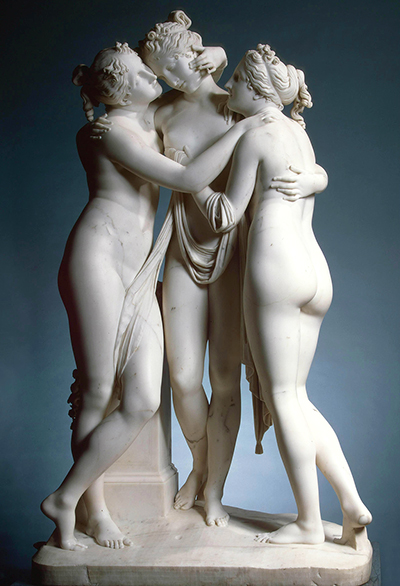We can learn much more about Antonio Canova through any available quotes that have been attributed to him from during his life, as well as by studying comments and opinions by other notable figures that were around during that period.
Famous Quotes by Antonio Canova
I have read that the ancients, when they had produced a sound, used to modulate it, heightening and lowering its pitch without departing from the rules of harmony. So must the artist do in working at the nude.
So must the artist do in working at the nude.
Quotes about Antonio Canova by Art Historians and Fellow Artists
Canova's art requires freeing from the contagion of all poetics from Lessing and Winckelmann... to Schlegel from which he had been saved by the blissful ignorance of his youth.
Stendhal
His taste and spirit had not yet penetrated the secret of the kind of imitation one calls ideal or general... it consists in seeing and making visible the form of man, according to the general laws of his kind, rather than in particular details of an individual, as we showed it, and which could be found in antique sculpture of which Canova had yet to form an idea.
Quatremere de Quincy, describing Canova before he arrived in Rome
I remember finally (as he himself subsequently reminded me) that i had said to him that he should be aware of becoming an antique Bernini; that it appeared to me that it was his vocation to revive in new originals the principles of composition, style and execution of beautiful antiquity; that he should on his guard against all pretention beyond simple ideas and the grand precepts of austere drawing.
Quatremere de Quincy warning Canova to avoid taking too much influence from the style of Gian Lorenzo Bernini
This Venus... gets out of the bath with a sense of a shudder and modesty, and at the same time with a nobility characteristic of a lady, who is obliged in such a moment to dispose her legs and drapery to cover her naked body. The turn of her head has an infinite grace and her proportions being a little larger than the Venus de' Medici, make her less woman and more goddess.
Cicognara, whilst studying Venus Italica
Her Majesty has instructed me to submit to you an idea for a subject that could perhaps be represented in a work still more precious, one that she believes has not been treated by the ancients except in low reliefs nor by any modern sculptor apart from Germain Pilon. This subject is the Three Graces. Her Majesty thinks that this group would embody simultaneously three different expressions and, especially if executed by you, would be attractive and also have great success.
Empress Josephine's secretary, writing to Canova regarding the later Three Graces sculpture
The varied attitude of each figure, symmetry of limbs, delicacy of detail, exquisiteness of finish - in the morbidezza - that look of living softness given to the surface of the marble, which appears as if it would yield to the touch... It is a work of consumate skill... each figure is true to the most enchanting forms in nature! Each of them possessing peculiar and appropriate charms... [Canova's] perfect and familiar knowledge of anatomy and of all those sciences that are subsidiary to sculpture.
Reverend Philip Hunt, describing Three Graces




